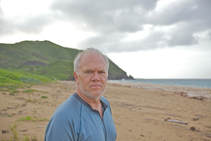
 The Earth Day Flag created by John McConnell The Earth Day Flag created by John McConnell
The celebrated astrophysicist, Neil deGrasse Tyson, said, “People never look up.” Tyson or Starman, as he is called, is right. Look up and you’ll see amazing stuff: puffy cumulonimbus clouds rising 60,000 feet, broken rainbows, blue skies bluer than blue, Venus and Mars huddling beside the new moon, the Milky Way.
When you look up, you can’t help realize you are standing, feet firmly planted, on planet Earth. We are attached in a very physical way to this place...this planet called Earth. So, not only look up, but, as Rachel Carson declared in many of her writings, “Look around, and down, and closer.” Whether you are looking up or looking down, we celebrate our home planet every year on April 22. This celebration or “birthday” is called Earth Day and it has been going on since 1970 after Gaylord Nelson, a U.S. Senator from Wisconsin, proposed a day of national focus on environmental issues. Buoyed by the success of Rachel Carson’s book Silent Spring, about the concern for living organisms and the environment, Earth Day 1970 set out to raise public awareness for the health and harmony of the planet. People from all walks of life— young and old, farmers and urban dwellers, liberals and conservatives— banded together and achieved great things. The first Earth Day on April 22, 1970 led to the creation of the United States Environmental Protection Agency and the passage of the Clean Air Act, the Clean Water Act, and the Endangered Species Act. And now, forty-six years later, Earth Day 2016 has gone truly global. Around the world, people celebrate Earth Day with massive rallies, marches and festivals. But for many people it is not just an annual event, but all the quiet acts and the simple habits performed throughout the year. For instance, I make it a habit of recycling every piece of plastic I use (or as much as humanly possible). Less plastic that ends up in the oceans means happier and healthier sea turtles and whales. If you want some ideas about how you can demonstrate your support for environmental protection, you might start by checking out the book, Recycle This Book - 100 Top Children’s Book Authors Tell You How To Go Green. And if you link to the Earth Day website, you can take a peek at all the great activities planned around the world on April 22, 2018. Let’s make this the best Earth Day ever...all year long! 
With essays from renowned children’s book authors such as Ann Brashares, Jeanne DuPrau, Caroline B. Cooney, Laurie Halse Anderson, Bruce Coville, Gennifer Choldenko, and more than 100 others, each piece is an informative and inspiring call to kids of all ages to understand what’s happening to the environment, and to take action in saving our world. Helpful tips and facts are interspersed throughout.

Part of the award-winning Scientists in the Field book series, Sea Turtle Scientist introduces Dr. Kimberly Stewart, “the turtle lady,” and describes her work on St. Kitts with endangered loggerhead sea turtles. The book provides extensive information on sea turtles and Dr. Stewart’s research, as well as the efforts of WIDECAST to preserve and protect these amazing creatures. For more information, visit the author's website.
Stephen R. Swinburne is a member of iNK's Authors on Call and is available for classroom programs through Field Trip Zoom, a terrific technology that requires only a computer, wifi, and a webcam. Click here to find out more.
MLA 8 Citation
0 Comments
 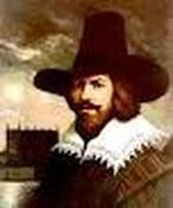 Guy Fawkes Guy Fawkes During much of the sixteenth century, England was wracked by violence between Catholics and Protestants. Hundreds of Protestants were executed during the reign of Queen Mary (1553–1558), earning her the nickname of “Bloody Mary.” Her Protestant successor, Queen Elizabeth (1558–1603) returned the favor by persecuting and killing Catholics. She was followed by James I, whose Catholic mother had been executed. James’s wife had recently converted to Catholicism. English Catholics therefore hoped he would be more tolerant than Elizabeth. While the number of executions dropped off, James ordered Catholic priests to leave England and said that Protestantism was the one true faith. Despairing Catholics decided on a desperate measure. They would assassinate James and install his nine-old-daughter Elizabeth as a Catholic monarch. The plotters secreted three dozen barrels of gunpowder in the basement beneath the House of Lords a few days before the opening of Parliament on November 5, 1605. Guy Fawkes, one of the plotters, planned to ignite a fuse when King James entered the chamber and then scurry to safety. With most members of Parliament and other high officials dead in the explosion, the resulting chaos would make it easier for the schemers to seize control of the government. However, some of the conspirators realized that this plan would kill a lot of innocent people, including Catholics. So in late October, one of them sent an anonymous warning letter to a Catholic Member of Parliament. He passed along the message to the king’s guardians. Shortly after midnight on November 5, a search party discovered Fawkes and the concealed gunpowder. He was tortured for several days to reveal the names of the other conspirators and then executed. His body was hacked into several pieces. The grisly chunks were displayed in several parts of England as a warning to would-be traitors. In celebration of the king’s salvation, many people lit bonfires on the night of the discovery. That began a tradition that continues to this day in what is known as Bonfire Night. Tonight in nations of the British Empire, revelers, many wearing Guy Fawkes apparel, are shooting off fireworks and building huge bonfires to burn effigies of the man regarded as England’s most notorious traitor. Happy Guy Fawkes Day!
 Jim Whiting has written more than a hundred books on many subjects. His is a very interesting person. Check out his website on Amazon. MLA 8 Citation
Whiting, Jim. "Let's Blow Up the King!" Nonfiction Minute, iNK Think Tank, 6 Nov. 2017, http://www.nonfictionminute.org/the-nonfiction-minute/lets-blow-up-the-king.  When the Seleucid emperor Antiochus IV came to power in 175 BCE after his brother was assassinated, he insisted on being called Antiochus Epiphanes (“Antiochus the Visible God”). To the Jews who had the misfortune to be among his subjects, he was Antiochus Epimanes (“Antiochus the lunatic”). No matter his name, he was definitely bad news to the Jews. Because of his Greek background, Antiochus believed in many gods. The Jews, on the other hand, were monotheistic. Antiochus soon began imposing his beliefs on the Jews and making it much more difficult for them to practice their religion. For example, anyone caught circumcising their newborn children would be put to death. In 168 he sacked Jerusalem. His forces cut down thousands of defenseless Jews of all ages, looted and desecrated the Second Temple, and erected a massive statue of the chief Greek god Zeus (using himself as a model for the sculptor who created the statue). Soon the altar ran red with the blood of swine that were slaughtered as sacrifices. For good measure, Antiochus also outlawed the Hebrew religion. The outraged Jews fought back. An elderly priest named Mattathias and some of his men killed a group of Seleucid soldiers. That ignited a revolt against Antiochus’s rule. When Mattathias died, his son Judah assumed the leadership role. Judah soon acquired the surname of Maccabee (“the hammer”) for his skill in battle. After a series of successful guerrilla operations, he led his vastly outnumbered forces to two decisive victories that resulted in the recapture of Jerusalem in 165. The first order of business was cleansing the temple so it could be rededicated. The ceremony began on the 25th day of the Hebrew month of Kislev. According to legend, the small amount of purified oil that was readily available for the rites was expected to burn just a single night. Instead it burned for eight nights, when a new supply became available. That miracle gave rise to the ceremony of lighting one candle for each of the eight nights of Hanukkah, which means “dedication.” Because the Hebrew calendar is lunar-based, the dates of Hanukkah change each year. This year Hanukkah begins [December 12] at sunset and lasts until sunset on December [20]. To the Jewish families who celebrate the holiday, Happy Hanukkah! 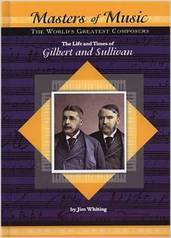 The holidays are approaching and millions of people will be listening to Handel’s Messiah. Read all about the composer in Jim Whiting’s Masters of Music biography. MLA 8 Citation
Whiting, Jim. "The Story of Hanukkah." Nonfiction Minute, iNK Think Tank, 11 Dec. 2017, www.nonfictionminute.org/the-story-of-hanukkah. 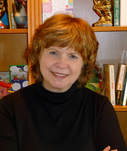 When I was a kid fifty years ago, President Theodore Roosevelt had a bad rap. We learned that way back in the 1900s, he banned Christmas trees from the White House. What a lousy father, I thought. Down through the years, the story went something like this: Across America in the early 1900s, huge forests were in danger of destruction from a lumbering practice called “clear-cutting.” Lots of newspapers and public leaders asked Americans to stop going to the woods to cut Christmas trees. Now when the Roosevelts and their six kids lived in the White House, they didn’t have a tree. Stockings and presents, but not a tree. So folks assumed that Roosevelt had outlawed Christmas trees, because he was a huge outdoorsman and conservationist. But, according to people who’ve done their history homework, that’s not the whole truth. It’s possible that First Lady Edith Roosevelt had six kids to think of and didn’t want the extra fuss of a Christmas tree. Christmas trees had become very popular ever since the old German tradition was picked up in the United States, but not everyone chose to have one. As it turned out, the Roosevelts did have at least one tree, courtesy of their eight-year-old son Archie. On Christmas morning 1902, Archie surprised his family. The president wrote about it in a letter that told of Christmas morning:
A magazine ran the story of Archie’s tree the next year. From then on, it picked up all sorts of embellishments, sort of like playing telephone at a birthday party. Today, the best explanation of the old story appears on a blog run by the Forest History Society. Visit their website. And for more cool facts about Christmas trees, check out the website of the folks who know, the College of Agriculture at the University of Illinois. 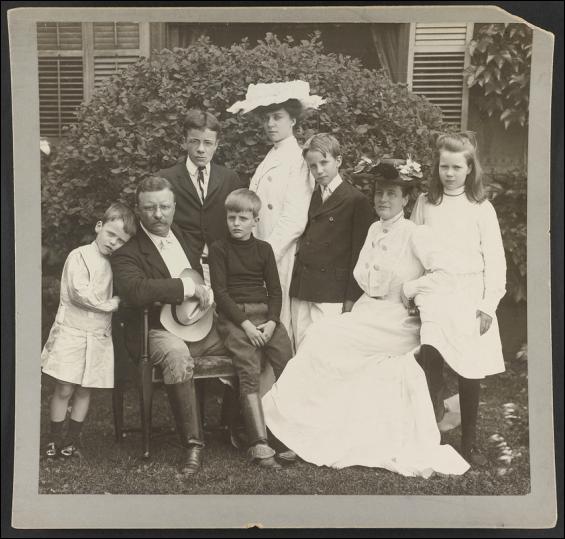 Roosevelt Family in 1903 with Quentin on the left, TR, Ted, Archie, Alice, Kermit, Edith, and Ethel. Credit: Library of Congress Roosevelt Family in 1903 with Quentin on the left, TR, Ted, Archie, Alice, Kermit, Edith, and Ethel. Credit: Library of Congress  Theodore Roosevelt for Kids brings to life this fascinating man, an American giant whose flaws were there for all the world to see. Twenty-one hands-on activities offer a useful glimpse at Roosevelt’s work and times. Readers will create a Native American toy, explore the effects of erosion, go on a modern big game hunt with a camera, and make felted teddy bears. The text includes a time line, online resources, and reading list for further study. And through it all, readers will appreciate how one man lived a “Bully!” life and made the word his very own. Kerrie Hollihan is a member of iNK's Authors on Call and is available for classroom programs through FieldTripZoom, a terrific technology that requires only a computer, wifi, and a webcam. Click here to find out more. MLA 8 Citation
Hollihan, Kerrie Logan. "Did Theodore Roosevelt Ban Christmas Trees?" Nonfiction Minute, iNK Think Tank, 22 Dec. 2017, www.nonfictionminute.org/the-nonfiction-minute/ Did-Theodore-Roosevelt-Ban-Christmas-Trees. Accessed 22 Dec. 2017. 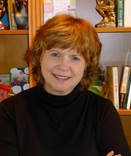 Long before we celebrated Halloween, Celtic people in the British Isles honored the dead during Samhain (which we pronounce “SOW-ren”). Some scholars think that Samhain was a Celtic version of New Year’s Eve. It was a holiday filled with ritual. Folks believed that in late fall, the veil between the worlds of the living and the dead was at its very thinnest. To light their way at this dark time of year, they carved out vegetables, and popped glowing coals inside. A popular choice was the humble turnip, which they grew, cooked, and ate, of course. Why turnips, you may ask? Think! Pumpkins didn’t grow in Europe—they are a New World vegetable. In fact, an old drawing shows how Indians in Virginia grew pumpkins in their villages in the late 1500s. Why not give turnip carving a try? Order big ones at your farm market. When you first bring them home, they might be hard as rocks. Let them sit out in the open for several days until they soften up a bit. To carve yourself some examples of the original “jack-o-lantern,” grab the turnips, some tea lights, a small knife, and a pointy spoon. Hold the turnip root tip up. Use a marker to draw the circle for the lid. Then trace or draw eyes, nose, mouth—whatever you’d like. Now be sure there’s an adult to help you! Use the knife to carve around the circle. Remove the top of the turnip and set it aside. That’s your lid. Use the spoon to scoop out the turnip just like a pumpkin. Be sure to leave a nice thick wall. Then pierce the turnip with your knife and gently carve out the features. Pop the tea light inside. Find a dark spot. Have the grownup help you light the wick and… LET IT GLOW! Today, folks grow pumpkins in the Old World, so kids all over Ireland, Scotland, England, and Wales carve jack-o-lanterns just like you do. Turnips are out….unless you want to feed the cows. 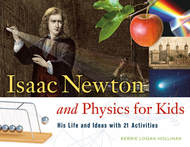 Kerrie Hollihan's biography of Isaac Newton sheds light on a lot of ideas people thought were mysterious. If you liked the turnip activity, there are lots more in this book. Kerrie Hollihan is a member of iNK's Authors on Call and is available for classroom programs through FieldTripZoom, a terrific technology that requires only a computer, wifi, and a webcam. Click here to find out more. |
*NEWS
|
For Vicki Cobb's BLOG (nonfiction book reviews, info on education, more), click here: Vicki's Blog
The NCSS-CBC Notable Social Studies Committee is pleased to inform you
that 30 People Who Changed the World has been selected for Notable Social Studies Trade Books for Young People 2018, a cooperative project of the National Council for the Social Studies (NCSS) & the Children’s Book Council
Categories
All
Abolitionists
Adams Janus
Adaptation
Adaptations
Adkins Jan
Advertising
Aerodynamics
Africa
African American History
African Americans
Africa West
Agriculture
Aircraft
Air Pilots
Air Pressure
Air Travel
Albee Sarah
Alchemy
Alligators
Allusion
American History
American Icons
Amphibians
Amundsen Roald
Anatomy
Ancient
Ancient Cultures
Anderson Marian 1897-1993
Animal Behavior
Animal Experimentation
Animal Intelligence
Animals
Animation
Antarctica
Ants
Apache Indians
Apes
April Fool's Day
Architecture
Argument
Arithmetic
Art
Art Deco
Artists
Arts
Asia
Astronauts
Astronomy
Athletes
Atomic Theory
Audubon Societies
Authors
Autobiography
Automobiles
Aviation
Awards
Bacteria
Baseball
Battuta Ibn
Bears
Beatles
Beavers
Bees
Biodegradation
Biography
Biology
Biomes
Biomimicry
Biplanes
Birds
Black Death
Black History
Blindness
Blizzards
Bombs
Bonaparte Napoleon
Boone Daniel
Botany
Brazil
Bridges
Brill Marlene Targ
Brooklyn Bridge
Brown John
Buffaloes
Building Materials
Butterflies
Caesar
Caesar Julius
Caissons
Calculus
Calendars
Cannibal
Capitals
Caravaggio
Carbon Dioxide
Carnivores
Carson Mary Kay
Cartoons & Comics
Carving (Decorative Arts)
Cascade Range
Castaldo Nancy
Castles
Castrovilla Selene
Cathedrals
Cats
Caves
Celts
Cemeteries
Chemistry
Children's Authors
Child Welfare
China
Choctaw Indians
Christmas
Chronometers
Cicadas
Cinco De Mayo
Ciphers
Circle
Citizenship
Civil Rights
Civil Rights Movements
Civil War
Civil War - US
Climate
Climate Change
Clocks And Watches
Clouds
Cobb Vicki
COBOL (Computer Language)
Code And Cipher Stories
Collard III Sneed B.
Collectors And Collecting
Color
Commerce
Communication
Competition
Compilers
Composers
Computers
Congressional Gold Medal
Consitution
Contests
Contraltos
Coolidge Calvin
Cooling
Corms
Corn
Counterfeiters
Covid-19
Crocodiles
Cryptography
Culture
Darwin Charles
Declaration Of Independence
Decomposition
Decompression Sickness
Deep-sea Animals
Deer
De Medici Catherine
Design
Detectives
Dickens Charles
Disasters
Discrimination
Diseases
Disney Walt
DNA
Dogs
Dollar
Dolphins
Douglass Frederick 1818-1895
Droughts
Dr. Suess
Dunphy Madeleine
Ear
Earth
Earthquakes
Ecology
Economics
Ecosystem
Edison Thomas A
Education
Egypt
Eiffel-gustave-18321923
Eiffel-tower
Einstein-albert
Elephants
Elk
Emancipationproclamation
Endangered Species
Endangered-species
Energy
Engineering
England
Englishlanguage-arts
Entomology
Environmental-protection
Environmental-science
Equinox
Erie-canal
Etymology
Europe
European-history
Evolution
Experiments
Explorers
Explosions
Exports
Extinction
Extinction-biology
Eye
Fairs
Fawkes-guy
Federalgovernment
Film
Fires
Fishes
Flight
Floods
Flowers
Flute
Food
Food-chains
Foodpreservation
Foodsupply
Food-supply
Football
Forceandenergy
Force-and-energy
Forensicscienceandmedicine
Forensic Science And Medicine
Fossils
Foundlings
France
Francoprussian-war
Freedom
Freedomofspeech
French-revolution
Friction
Frogs
Frontier
Frontier-and-pioneer-life
Frozenfoods
Fugitiveslaves
Fultonrobert
Galapagos-islands
Galleys
Gametheory
Gaudi-antoni-18521926
Gender
Generals
Genes
Genetics
Geography
Geology
Geometry
Geysers
Ghosts
Giraffe
Glaciers
Glaucoma
Gliders-aeronautics
Global-warming
Gods-goddesses
Gold-mines-and-mining
Government
Grant-ulysses-s
Grasshoppers
Gravity
Great-britain
Great-depression
Greece
Greek-letters
Greenberg Jan
Hair
Halloween
Handel-george-frederic
Harness Cheryl
Harrison-john-16931776
Health-wellness
Hearing
Hearing-aids
Hearst-william-randolph
Henry-iv-king-of-england
Herbivores
Hip Hop
History
History-19th-century
History-france
History-world
Hitler-adolph
Hoaxes
Holidays
Hollihan Kerrie Logan
Homestead-law
Hopper-grace
Horses
Hot Air Balloons
Hot-air-balloons
Housing
Huguenots
Human Body
Hurricanes
Ice
Icebergs
Illustration
Imagery
Imhotep
Imperialism
Indian-code-talkers
Indonesia
Industrialization
Industrial-revolution
Inquisition
Insects
Insulation
Intelligence
Interstatecommerce
Interviewing
Inventions
Inventors
Irrational-numbers
Irrigation
Islands
Jacksonandrew
Jazz
Jeffersonthomas
Jefferson-thomas
Jemisonmae
Jenkins-steve
Jet-stream
Johnsonlyndonb
Jokes
Journalism
Keeling-charles-d
Kennedyjohnf
Kenya
Kidnapping
Kingmartinlutherjr19291968
Kingmartinlutherjr19291968d6528702d6
Kings-and-rulers
Kings Queens
Kings-queens
Koala
Labor
Labor Policy
Lafayette Marie Joseph Paul Yves Roch Gilbert Du Motier Marquis De 17571834
Landscapes
Languages-and-culture
Law-enforcement
Layfayette
Levers
Levinson Cynthia
Lewis And Clark Expedition (1804-1806)
Lewis Edmonia
Liberty
Lift (Aerodynamics)
Light
Lindbergh Charles
Liszt Franz
Literary Devices
Literature
Lizards
Longitude
Louis XIV King Of France
Lumber
Lunar Calendar
Lynching
Macaws
Madison-dolley
Madison-james
Madison-james
Mammals
Maneta-norman
Maneta-norman
Marathon-greece
Marine-biology
Marine-biology
Marines
Marsupials
Martial-arts
Marx-trish
Mass
Massachusetts-maritime-academy
Mass-media
Mastodons
Mathematics
May-day
Mcclafferty-carla-killough
Mcclafferty-carla-killough
Mckinley-william
Measurement
Mechanics
Media-literacy
Media-literacy
Medicine
Memoir
Memorial-day
Metaphor
Meteorology
Mexico
Mickey-mouse
Microscopy
Middle-west
Migration
Military
Miners
Mississippi
Molasses
Monarchy
Monsters
Montgomery
Montgomery-bus-boycott-19551956
Montgomery-heather-l
Monuments
Moon
Moran-thomas
Morsecode
Morsesamuel
Moss-marissa
Moss-marissa
Motion
Motion-pictures
Mummies
Munro-roxie
Munro-roxie
Musclestrength
Museums
Music
Muslims
Mythologygreek
Nanofibers
Nanotechnology
Nathan-amy
Nathan-amy
Nationalfootballleague
Nationalparksandreserves
Nativeamericans
Native-americans
Native-americans
Naturalhistory
Naturalists
Nature
Nauticalcharts
Nauticalinstruments
Navajoindians
Navigation
Navy
Ncaafootball
Nervoussystem
Newdeal19331939
Newman-aline
Newman-aline
Newton-isaac
New-york-city
Nobelprizewinners
Nomads
Nonfictionnarrative
Nutrition
Nylon
Nymphs-insects
Oaths Of Office
Occupations
Ocean
Ocean-liners
Olympics
Omnivores
Optics
Origami
Origin
Orphans
Ottomanempire
Painters
Painting
Paleontology
Pandemic
Paper-airplanes
Parksrosa19132005
Parrots
Passiveresistance
Patent Dorothy Hinshaw
Peerreview
Penguins
Persistence
Personalnarrative
Personification
Pets
Photography
Physics
Pi
Pigeons
Pilots
Pinkertonallan
Pirates
Plague
Plains
Plainsindians
Planets
Plantbreeding
Plants
Plastics
Poaching
Poetry
Poisons
Poland
Police
Political-parties
Pollen
Pollution
Polo-marco
Populism
Portraits
Predation
Predators
Presidentialmedaloffreedom
Presidents
Prey
Prey-predators
Prey-predators
Prime-meridian
Pringle Laurence
Prohibition
Proteins
Protestandsocialmovements
Protestants
Protestsongs
Punishment
Pyramids
Questioning
Radio
Railroad
Rainforests
Rappaport-doreen
Ratio
Reading
Realism
Recipes
Recycling
Refrigerators
Reich-susanna
Religion
Renaissance
Reproduction
Reptiles
Reservoirs
Rheumatoidarthritis
Rhythm-and-blues-music
Rice
Rivers
Roaringtwenties
Roosevelteleanor
Rooseveltfranklind
Roosevelt-franklin-d
Roosevelt-theodore
Running
Russia
Safety
Sanitation
Schwartz David M
Science
Scientificmethod
Scientists
Scottrobert
Sculpture
Sculpturegardens
Sea-level
Seals
Seals-animals
Secretariesofstate
Secretservice
Seeds
Segregation
Segregationineducation
Sensessensation
September11terroristattacks2001
Seuss
Sextant
Shackletonernest
Shawneeindians
Ships
Shortstories
Silkworms
Simple-machines
Singers
Siy Alexandra
Slavery
Smuggling
Snakes
Socialchange
Social-change
Socialjustice
Social-justice
Socialstudies
Social-studies
Social-studies
Sodhouses
Solarsystem
Sound
Southeast-asia
Soybean
Space Travelers
Spain
Speech
Speed
Spiders
Spies
Spiritualssongs
Sports
Sports-history
Sports-science
Spring
Squirrels
Statue-of-liberty
STEM
Storms
Strategy
Sugar
Sumatra
Summer
Superbowl
Surgery
Survival
Swanson-jennifer
Swinburne Stephen R.
Synthetic-drugs
Taiwan
Tardigrada
Tasmania
Tasmanian Devil
Tasmanian-devil
Technology
Tecumsehshawneechief
Telegraph-wireless
Temperature
Tennis
Terrorism
Thomas Peggy
Thompson Laurie Ann
Time
Titanic
Tombs
Tortoises
Towle Sarah
Transcontinental-flights
Transportation
Travel
Trees
Trung Sisters Rebellion
Tundra
Turnips
Turtles
Typhoons
Underground Railroad
Us-environmental-protection-agency
Us History
Us-history
Ushistoryrevolution
Us History Revolution
Us-history-war-of-1812
Us Presidents
Ussupremecourtlandmarkcases
Vacations
Vaccines
Vangoghvincent
Vegetables
Venom
Vietnam
Viruses
Visual-literacy
Volcanoes
Voting-rghts
War
Warne-kate
Warren Andrea
Washington-dc
Washington George
Water
Water-currents
Wax-figures
Weapons
Weather
Weatherford Carole Boston
Whiting Jim
Wildfires
Winds
Windsor-castle
Wolves
Woman In History
Women
Women Airforce Service Pilots
Women-airforce-service-pilots
Womeninhistory
Women In History
Women-in-science
Women's History
Womens-roles-through-history
Wonder
Woodson-carter-godwin-18751950
World-war-i
World War Ii
World-war-ii
Wright Brothers
Writing
Writing-skills
Wwi
Xrays
Yellowstone-national-park
Zaunders Bo
ArchivesMarch 2021
February 2021
January 2021
December 2020
November 2020
October 2020
September 2020
June 2020
May 2020
April 2020
March 2020
February 2020
January 2020
December 2019
October 2019
September 2019
August 2019
July 2019
May 2019
April 2019
March 2019
February 2019
January 2019
December 2018
November 2018
September 2018
June 2018
May 2018
April 2018
March 2018
February 2018
January 2018
December 2017
November 2017
October 2017
September 2017
March 2017
The NONFICTION MINUTE, Authors on Call, and. the iNK Books & Media Store are divisions of iNK THINK TANK INC.
a 501 (c) (3) nonprofit corporation. To return to the iNK Think Tank landing page click the icon or the link below. :
http://inkthinktank.org/
For more information or support, contact thoughts@inkthinktank.org
For Privacy Policy, go to
Privacy Policy
© COPYRIGHT the Nonfiction Minute 2020.
ALL RIGHTS RESERVED.
This site uses cookies to personalize your experience, analyze site usage, and offer tailored promotions. www.youronlinechoices.eu
Remind me later
Archives
March 2023
February 2023
January 2023
December 2022
November 2022
October 2022
September 2022
June 2022
May 2022
April 2022
March 2022
February 2022
January 2022
December 2021
November 2021
September 2021
April 2021
March 2021
February 2021
November 2020
October 2020
September 2020
June 2020
May 2020
April 2020
March 2020
February 2020
January 2020
October 2019
August 2019
July 2019
May 2019
April 2019
December 2018
September 2018
June 2018
May 2018
March 2018
February 2018
January 2018
December 2017
November 2017
October 2017
September 2017





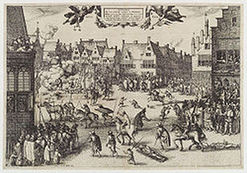
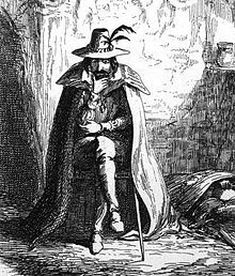





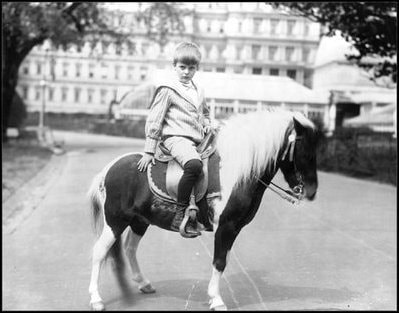
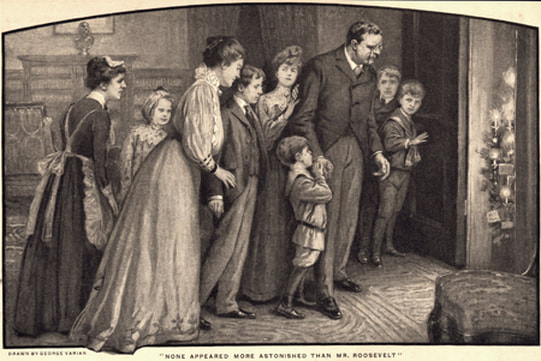



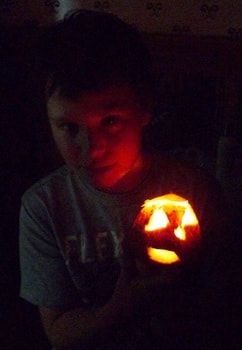

 RSS Feed
RSS Feed
